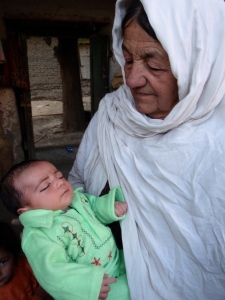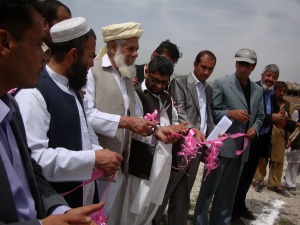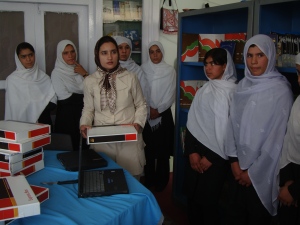Afghanistan ranks 191 – currently dead last – on the Quality of Life Index. To compare: DR Congo and Cambodia are tied at 160.
Maternal deaths are the 2nd highest in the world., where one women dies every 30 minutes.
Newborn deaths are the highest in the world with 1 in 4 children dying before their 5th birthday.
81% of women deliver at home without assistance. Women and their babies die in childbirth or in the first two days due to lack of medical care and support.
80% of these deaths could be managed by a skilled birth attendant (SBA).
19% of newborn deaths come from asphyxia, and 50% from simple infections. Both are preventable with simple tools.
That’s the cold hard facts. Women are not valued the same as men or boys in Afghanistan. In populated areas, often families are simply unwilling to pay for available health care for women when they are sick. Their lives are simply not worth a $25 doctor’s visit. In rural areas, the family may not HAVE $25 for a doctor’s visit.
Mountain 2 Mountain is approaching this problem with a fully unique approach that mirrors their cyclical model for education, training, job creation, and small business start ups. Smaller footprint, less infrastructure, more education and training, microfinance, and sustainable development to reduce dependence.
The traditional model employed by larger NGO’s build and staff midwifery training clinics in large communities so that they can bring graduates to a centralized location. Afghanistan is a decentralized country even at the government level, and when coupled with the gender and cultural issues that often prevent young women to travel outside of their communities alone for schooling, it is often ineffective. Conversely, it is difficult to encourage graduates of these schools to travel to rural areas to live and work as health care workers. Freedom of movement and relocation for Afghan women is not the same as it is in other regions of the world. This model is cumbersome and doesn’t address the immediate issue at hand. High rates of women and babies will continue to die in rural communities.
Our approach not only takes these important points into account by bringing the education to the rural communities and training local girls, often only a 4th grade level. These candidates can learn enough during an intensive four week training in their community to effectively manage and potentially prevent nearly 70% of maternal and newborn deaths.
Each year another 4 week training will take place to continue their education and allow it time to be put into practice. The full program would take 5 years to complete. This may seem like a long process, but the effect is immediate after the initial 4 week training.
Skilled birth attendants can make an impact by decreasing birthing deaths, teaching basic sanitation and prenatal care to their community, and creation of jobs for women in rural communities that often have no opportunities for female employment.
The long term effect is a thriving, healthy community, and a shift in the role of women within the male dominated society. They prove their worth and earn respect organically by provided a needed service to their community.
That’s not to say that certified midwives and OB/GYN’s are not needed. They most definitely are, but larger NGO’s can do that work best with bigger budgets and deeper resources.
When strong candidates, with talent, education, and family support, emerge for continued education we would sponsor those candidates for further nursing or midwife training programs and ensure that we can set them up with clinics and support back in their village upon completion of their training.
This model can be replicated throughout rural communities across the country, with Western doctors and nurses that have a knack for teaching and want to donate their time for the 4 week trainings. Spending the majority of the funding on education, training, equipment, and resources, versus construction and staffing of large scale training clinics.
We plan to move forward with this village to village approach to health care and midwifery with our first communities this year, so that our first round of skilled birth attendants can make an impact in their respective villages. We look forward to sharing with you their progress in the months and years to come.







